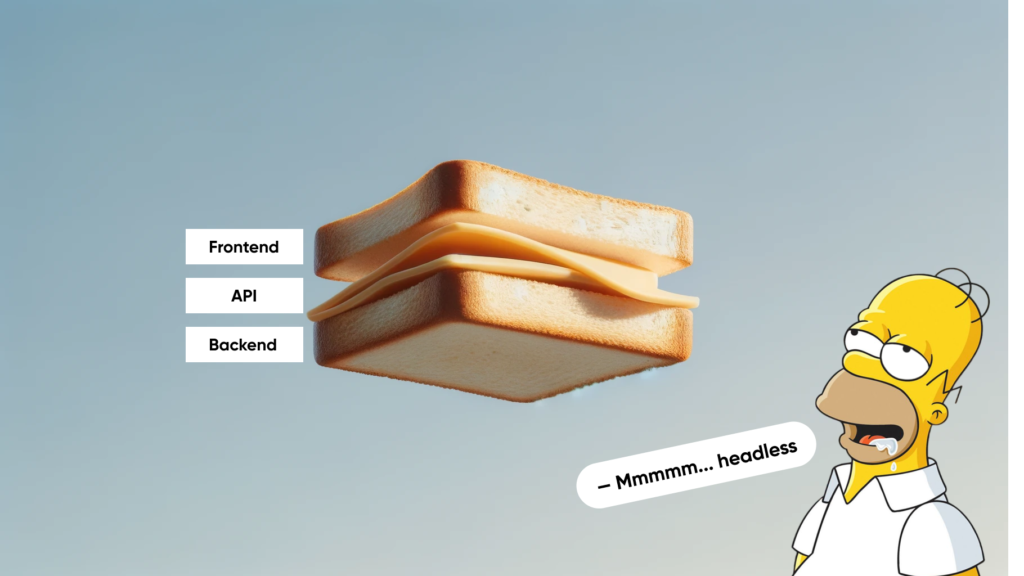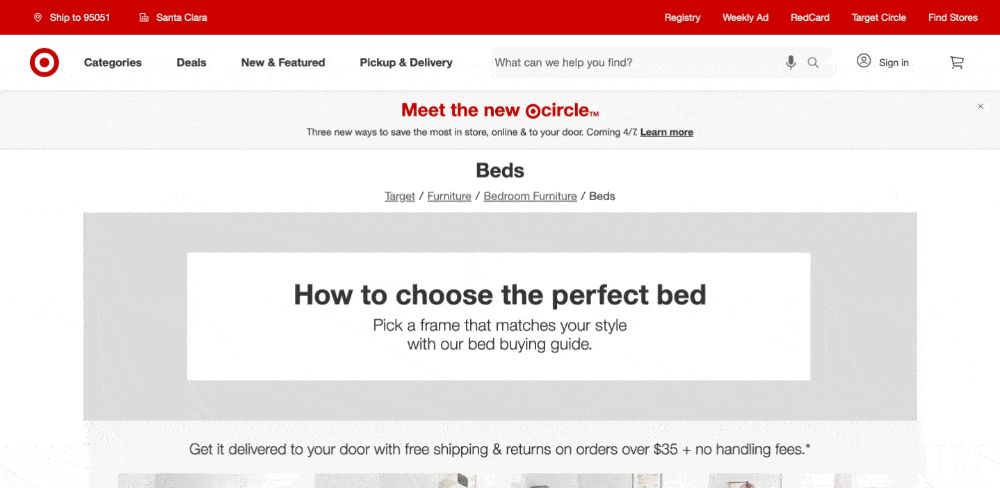Headless Commerce: How to Scale Your Business to a Whole New Level
Looking at how businesses are using headless commerce today, we find it’s becoming a popular choice not only among big players and enterprises but also smaller businesses.
In 2024, data shows that about 62.5% of those who have chosen headless commerce are either startups or small to medium-sized enterprises (SMEs). This suggests that these smaller businesses see a lot of value in the flexibility and growth potential that headless commerce offers.
In terms of industry impact, retail is leading the way. By 2026, it’s expected that the retail sector will make up 33% of the headless commerce market. This highlights how important headless commerce is becoming for retailers who want to offer better shopping experiences across different channels.
Additionally, there’s a significant benefit in terms of IT resource savings. Businesses moving to headless commerce can cut their IT costs by up to 50% when it comes to making updates, fixing bugs, or optimizing their systems. This reduction in IT expenses means companies can spend less on upkeep and more on improving their products or services.
These statistics paint a clear picture: headless commerce is on the rise, offering particular advantages for agility, cost-saving, and providing a better customer experience. Its growing adoption reflects a shift towards more dynamic and efficient business operations in the online commerce space.
62.5% of those who have chosen headless commerce are small to medium businesses
By 2026, retailers will make up 33% of the headless commerce market
Businesses cut their IT costs by up to 50% by switching to a headless commerce platform
Let’s dive deeper into the business side of headless commerce and find out how you can scale your business with a headless platform.
Strategies for Implementing Headless Commerce
When it comes to headless development, there are a few strategies that can help businesses make the most of this technology. Let’s break down these strategies into simpler terms.
Decoupling the Frontend and Backend
First off, headless commerce works by separating the frontend (what users see) from the backend (where data is processed).
This separation offers a big advantage for businesses. It allows for more flexibility in updating and customizing the customer experience without having to overhaul the entire system. This means businesses can quickly adapt to new trends or customer feedback, keeping them a step ahead in the market.

Major Scenarios: Central vs. Peripheral Headless Platforms
Companies implement headless commerce in two main ways: as the core of a business’s digital operations or as one component of a broader system.
Headless as the Core
In this scenario, the headless platform is at the heart of the business. It’s fully integrated with various services and custom frontends. This setup is ideal for businesses looking for a highly tailored solution. It allows them to build the entire ecosystem of services and tools on top of a powerful backend. It’s a great way to offer unique customer experiences that can differentiate a business from its competitors.

Headless as a Component
Here, the headless platform is just one piece of the business’s digital puzzle. It interacts with other parts of the ecosystem, such as additional backends, frontends, and services through APIs. This flexibility is great for companies that already have an established business ecosystem and want to add something big like an eCommerce marketplace or B2B portal to diversify their business.

Both scenarios offer significant advantages, including the ability to innovate and adapt to market changes quickly.
Choosing the Right Tech Stack
Selecting the best technologies for the frontend and backend is crucial.
- For the Backend: Laravel is one of the most popular choices. It’s known for its robust features and flexibility, great development tools and a big community, making it a solid foundation for the backend operations of a headless commerce system.
- For the Frontend: ReactJS stands out as one of the most efficient technologies. It helps create dynamic, responsive, and fast user interfaces, ensuring a smooth customer experience. Just like Laravel, ReactJS is one of the most popular technologies for making interfaces, has great documentation, development tools, and a vibrant community.
- For Connecting Them: API allows the front and back ends to communicate effectively. For implementing API, developers often prefer using GraphQL. This query language offers a more flexible approach to querying data, making it easier to fetch exactly what’s needed without overloading the system.
By carefully choosing the right technologies and understanding how best to implement headless commerce, businesses can set themselves up for greater efficiency, flexibility, and ultimately, success in the digital marketplace.
Pro tip: The more popular technologies you use for your headless commerce system, the easier and faster development will be, reducing your time to market. For our headless platform CS-Cart Enterprise, we use Laravel, GraphQL, ReactJS, and many other cutting-edge technologies to make a flexible, easy-to-develop headless solution.
Leveraging Headless for Scalability and Growth
As businesses grow, they often face challenges in scaling their operations, especially when it comes to their online commerce platforms. Let’s look at how headless commerce can address these challenges and support business expansion.
Traditional vs. Headless Commerce: Comparing Key Factors
Let’s simplify how traditional and headless commerce platforms compare across several important areas:
Scalability and Performance
- Traditional Commerce: Growing bigger or handling more visitors can be tough because the website’s front and back ends are closely tied together. This can slow things down when you get more traffic or add more products.
- Headless Commerce: It’s easier to grow and keep your site running smoothly. Since the front and back ends are separate, you can improve one without messing with the other, handling more visitors better.
Development Speed
- Traditional Commerce: Making changes or adding features can be slow because you often have to work on both the front and back ends at the same time.
- Headless Commerce: You can make updates faster, especially on the website’s look and feel, without waiting on backend changes.
Time to Market
- Traditional Commerce: It might take longer to launch new features or websites because both the front and back ends need to be ready and tested together.
- Headless Commerce: You can launch new features quicker since you can update the website’s frontend without having to change the backend too.
Omnichannel Experience
- Traditional Commerce: Creating a consistent shopping experience across different devices and channels can be complicated and slow.
- Headless Commerce: It’s easier to provide a seamless shopping experience everywhere, from mobile apps to online stores, because you can use the same backend for all of them.
Security
- Traditional Commerce: Security can be tricky since problems in one part of the website might affect the whole thing.
- Headless Commerce: It might be safer because you can protect the front and back ends separately, reducing the risk of issues spreading.
Costs
- Traditional Commerce: It might seem cheaper at first, but updating or growing your site can become expensive over time and can even lead to the entire platform replacement.
- Headless Commerce: Although starting might cost more because of the tech and setup involved, you could save money in the long run due to easier updates and scalability.
Overall, headless commerce offers clear benefits like better scalability, faster updates, and a smoother shopping experience across different channels. Even if it might cost more to start, its flexibility and efficiency can make it a worthwhile investment for growing businesses.
Supporting Business Growth and International Expansion
Headless commerce is particularly well-suited to supporting business growth and international expansion. Since the frontend is separate from the backend, businesses can easily create customized experiences for different markets without needing to rebuild their entire system. This means they can quickly adapt to local languages, currencies, and market preferences, offering a localized experience that resonates with customers worldwide.
Furthermore, the flexibility of headless commerce allows for the easy integration of new payment gateways, shipping providers, and other localized services, facilitating smoother operations in new markets.
True Omnichannel with Headless Commerce
True omnichannel is about providing a seamless customer experience across all channels, whether online or offline, mobile or desktop. Headless commerce is key to achieving this level of integration. Since the backend is separate from the frontend, businesses can use the same backend to power various frontend experiences. This ensures consistency across all customer touchpoints, from social media to mobile apps to in-store kiosks.
This omnichannel approach is not just about being present on multiple platforms—it’s about creating a cohesive, integrated shopping experience that allows customers to move seamlessly between channels, enhancing customer satisfaction and loyalty.
By providing the flexibility to adapt quickly to market changes, support international expansion, and deliver a true omnichannel experience, headless commerce is a powerful tool for businesses looking to thrive in today’s dynamic market.
Navigating the Challenges of Headless Commerce
While moving to headless commerce offers several advantages, such as improved scalability and a better customer experience, it’s important to understand and prepare for the challenges that come with it. Let’s explore some of these challenges.
1. Challenges in Learning the Platform
Moving to a headless commerce platform can mean a big change for everyone in your business, not just the tech team. Both your technical staff and non-technical employees will need to learn new ways of working, which can take time and might affect your business operations temporarily.
Building and running a headless system also requires specific skills and more developers than traditional platforms, so you might need to hire new people or provide training for your current team.

2. Complexity and Ongoing Costs
Headless commerce can make your technology setup more complex. You’ll have different systems working separately, which requires strong infrastructure and careful coordination to keep everything running smoothly.
This setup can demand more time from your developers and might increase the overall costs, especially if you need to significantly change (replatform) your existing system. Although headless commerce can reduce total costs over time, it’s essential to plan carefully to avoid unexpected expenses and ensure that the investment pays off.
3. Challenges of Switching Platforms
Switching from your current system to a headless setup isn’t always quick or easy. It takes detailed planning and a step-by-step approach to successfully move to headless commerce without causing major disruptions.
This process can be especially tricky if your team is not familiar with working on a modular system, potentially leading to technical issues or downtime. Sometimes, it might be more practical to update parts of your existing system gradually instead of replacing everything at once.
4. Integration Management
One of the strengths of headless commerce—its flexibility in integrating with various frontends and services—can also be a challenge. Ensuring seamless integration and communication between different parts of your system demands ongoing attention and technical expertise.
5. Content Management
Without the structured environment of traditional eCommerce platforms, managing content across multiple channels can become more complex in a headless setup. Finding the right tools and processes to streamline content updates and ensure consistency across all customer touchpoints is crucial.
Case Study: Real-World Application of Headless Commerce by Target

Background: As one of the leading retail giants in the United States, Target faced a significant challenge that was impacting its revenue: the modern consumer’s shopping journey often spans multiple devices, from initial browsing to final purchase. Recognizing that this fragmented experience was leading to lost sales, Target decided to shift towards a headless commerce approach.
Challenge: Target identified that the inconsistency in shopping experiences across different devices was a barrier to customer satisfaction and conversion rates. The retailer needed a solution that would allow consumers to seamlessly transition their shopping journey from one device to another without losing context or progress.
Solution: Embracing headless commerce, Target adopted a decoupled architecture for its online platform. This strategic move separated the frontend presentation layer from the backend data management, enabling a flexible and cohesive multichannel experience. By doing so, Target could update and optimize its website and mobile app independently, ensuring both remained fresh, engaging, and in sync with the consumer’s needs.
Outcome: The implementation of headless commerce at Target resulted in a more seamless and personalized shopping experience across all devices. Customers could now start their shopping on a mobile phone, continue on a tablet, and complete their purchase on a laptop without any hitches or data loss. This not only improved customer satisfaction but also significantly boosted Target’s website conversion rates by providing a consistent shopping experience, regardless of the device used.
Conclusion: Target’s successful adoption of headless commerce showcases the powerful impact of a decoupled architecture on enhancing the online retail experience. By prioritizing the flexibility and continuity of the customer journey across devices, Target not only solved a critical challenge but also set a new standard for omnichannel retailing.
Wrapping Up
Headless commerce is becoming a key choice for companies looking to grow, go omnichannel, or diversify the business. It’s popular not just with big companies but also with smaller ones, thanks to the benefits it offers like more control, better growth potential, and savings on IT costs.
Despite some hurdles, such as the complexity of setting things up and learning new systems, the success stories like Target’s show that making the switch can really pay off. Overall, headless commerce is shaping up to be an important tool for anyone wanting to offer a better shopping experience online.
Frequently Asked Questions
Q: What exactly is headless commerce?
A: Headless commerce is a way of building online stores where the frontend (what the user sees) is separated from the backend (where data is processed). This allows businesses to change the look and feel of their website without altering the backend code, making updates and customizations faster and easier.
Q: Why are SMEs and startups increasingly adopting headless commerce?
A: Small and medium-sized enterprises (SMEs) and startups are turning to headless commerce for its flexibility and growth potential. By decoupling the front and back ends, these businesses can quickly adapt to market changes and customer feedback, potentially giving them a competitive edge.
Q: How does headless commerce benefit the retail industry?
A: For retailers, headless commerce facilitates the creation of a seamless shopping experience across various channels and devices. This flexibility helps them to better meet customer expectations for a cohesive shopping journey, whether online, on mobile, or in-store, thus potentially increasing conversion rates.
Q: Are there any cost benefits to using headless commerce?
A: Yes, businesses moving to headless commerce can significantly reduce their IT costs, by up to 50% in some cases. Savings come from reduced time and resources spent on making updates, fixing bugs, or optimizing systems, allowing companies to allocate more budget towards innovation and improving customer service.
Q: What are some challenges businesses might face when implementing headless commerce?
A: While headless commerce offers numerous benefits, businesses might encounter challenges such as managing the complexity of their technology setup, handling the initial and ongoing costs, learning new systems, integrating various components smoothly, and ensuring consistent content management across channels.
Yan Anderson is the Head of Content Marketing at CS-Cart with over 10 years of experience in the eCommerce industry. He's passionate about explaining complicated things in simple terms. Yan has expertise in building, running and growing eCommerce marketplaces. He loves to educate people about best practices, new technologies, and trends in the global eCommerce industry.

